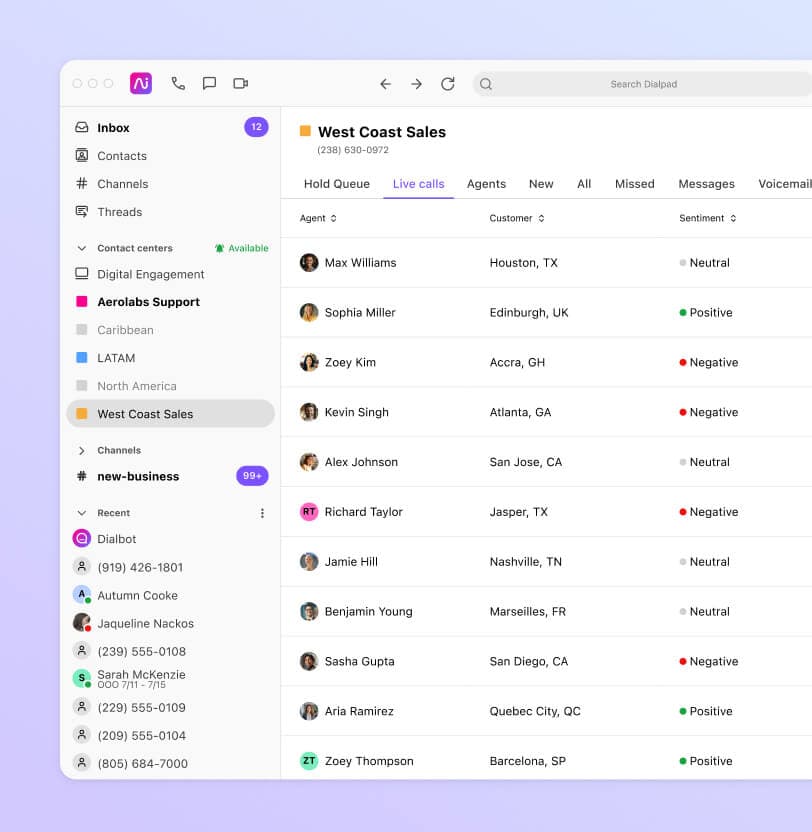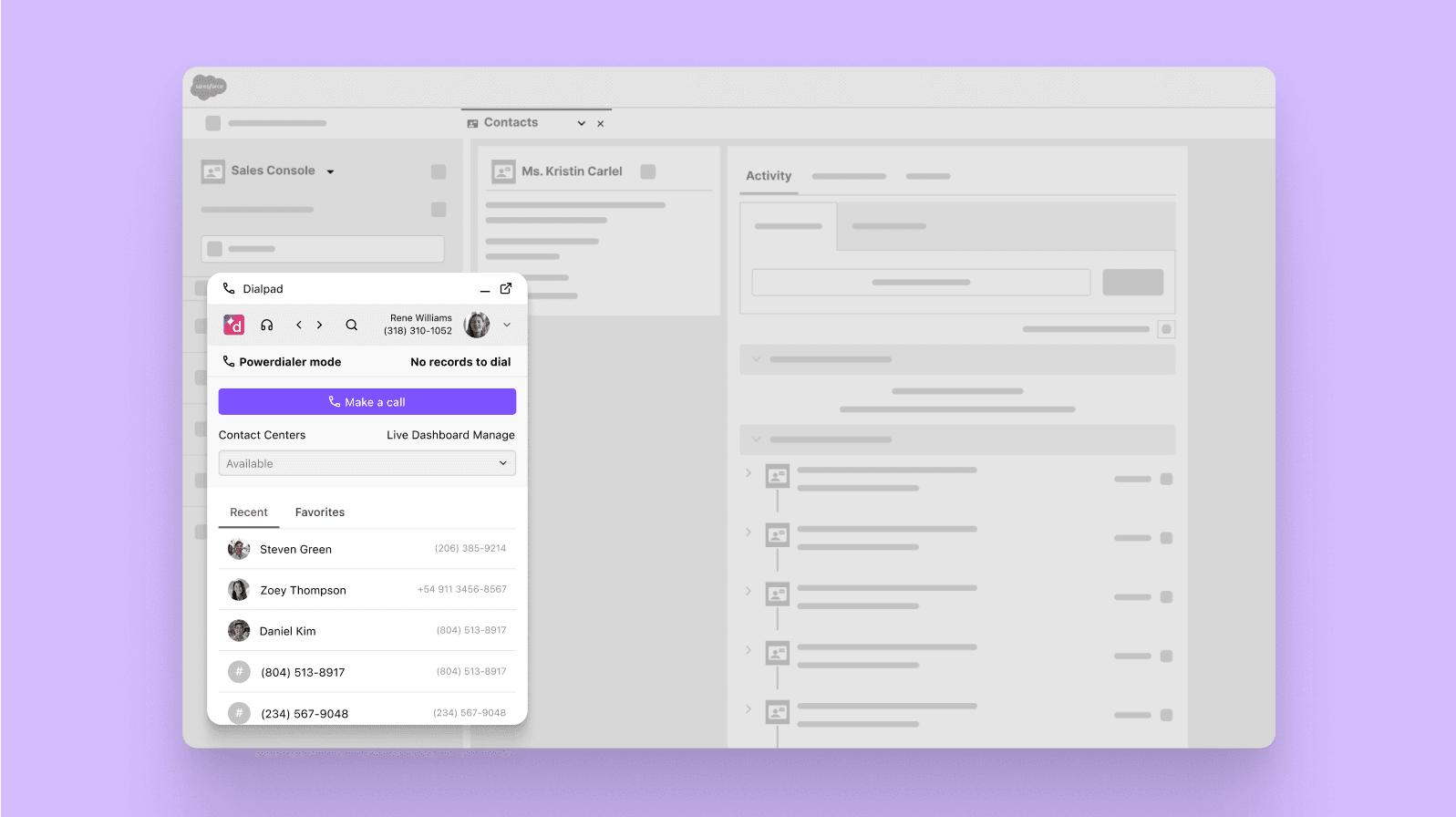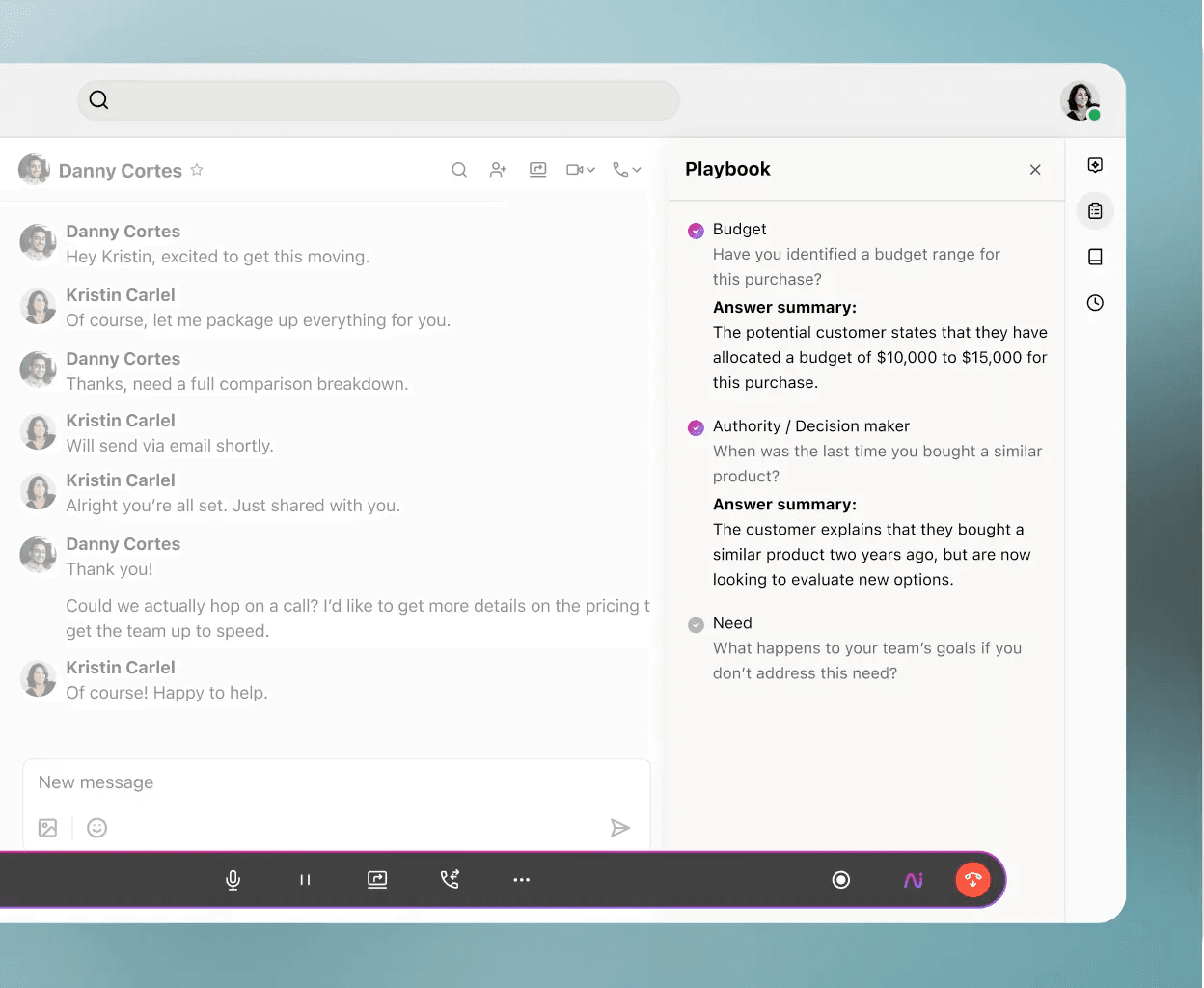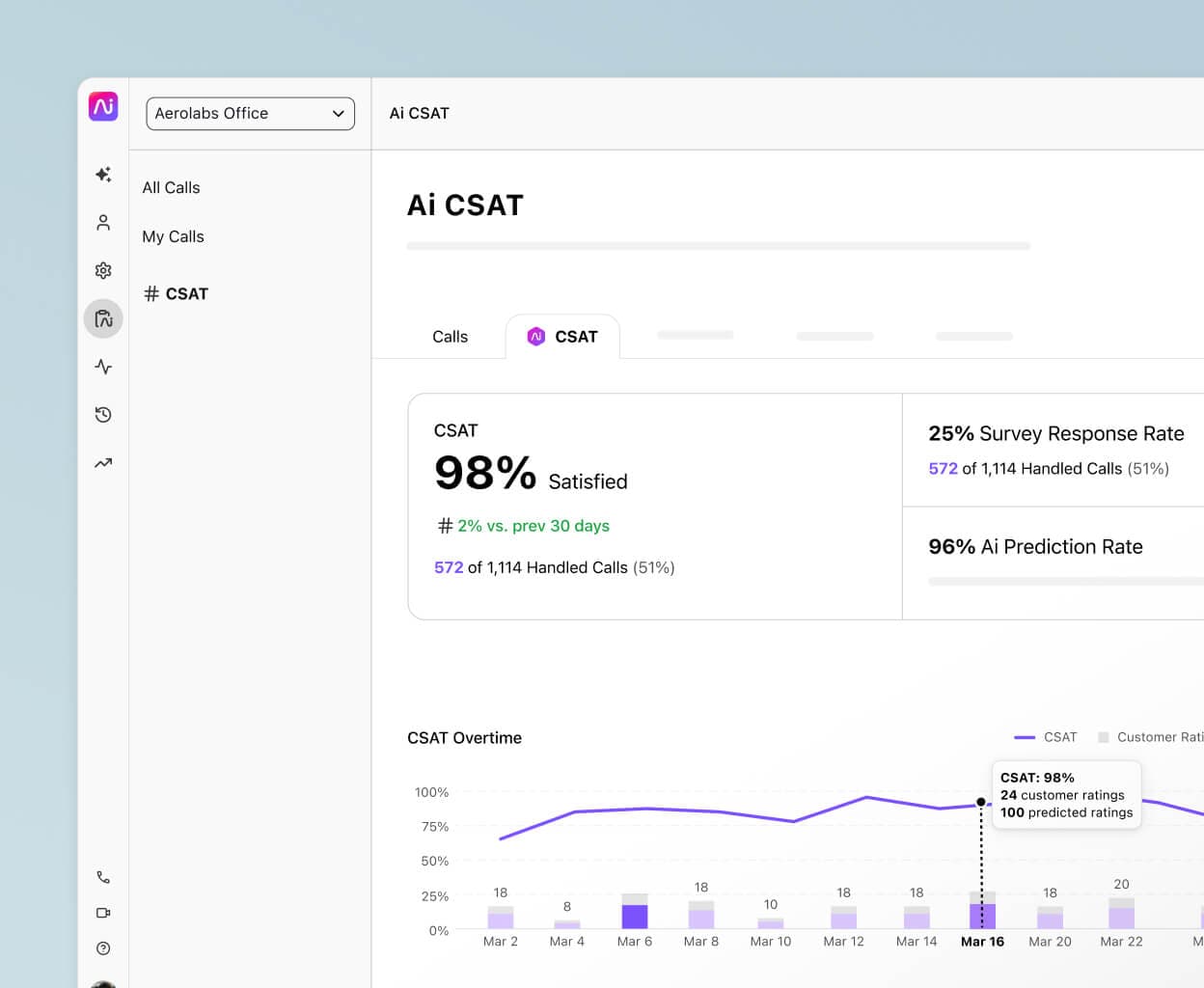Customer experience transformation: The 2025 playbook for driving growth and loyalty

Product Marketing Lead, Onboarding & Ecosystem

Tags
Share
In a market where products are easily replicated and prices can be matched, the experience you offer—like how customers feel when they interact with your brand—becomes your true competitive advantage.
Because of this, customer experience (CX) is no longer just a support function—it's a core part of a differentiated business strategy.
So what is customer experience transformation, and how can your business execute it to drive growth, loyalty, and long-term competitive edge in 2025 and beyond?
Keep reading to learn more.
What is customer experience (CX) transformation? (No, it’s not just a buzzword)
CX transformation is a fundamental evolution in how businesses operate, and involves redesigning the customer engagement strategy across all touchpoints to meet and exceed rising customer expectations.
Traditional customer experience efforts typically focus on improving isolated interactions—maybe a better IVR menu here, a friendlier support tone there.
But CX transformation is a strategic overhaul that often involves using technology—especially Ai-powered tools—to rethink the end-to-end experience. It aligns your people, processes, and platforms to deliver personalized, proactive, and predictive service at scale.
The goal: to create a cohesive customer experience from discovery to support and beyond.
Key differences: CX transformation vs. improving customer service
Improving customer service often focuses on fixing problems reactively—faster response times, better training, or improved SLAs. It’s also primarily focused on providing after-sales support or service. While this is valuable, it’s just one piece of the puzzle.
In contrast, customer experience transformation integrates every function—marketing, sales, support, and product—into a holistic strategy to improve customer experience across every channel. In other words, how can you deliver value before the customer even asks for it?
The business impact: Tying experience transformation to revenue and retention
A good customer experience drives real business outcomes. Here are just a few examples of the tangible benefits that a CX transformation can help drive, including impacts on revenue and retention:
For mass market auto manufacturers, improving CX by 1 point can lead to more than $1 billion in additional revenue. The reason? Improving CX increases the chance that customers will buy their next car from the same brand and take the car to the brand’s dealership for service needs.
A McKinsey survey found that customer satisfaction with health insurance is 73 percent more likely when the entire journey works well than when only touchpoints do.
A small 5% increase in customer retention can increase profits by as much as 95%.
During hard economic times, companies that prioritize customer experience realize three times the shareholder returns compared to the companies that don’t.
The three core pillars of a winning customer experience transformation strategy
Customer experience transformation is a coordinated effort that touches every part of your organization. To succeed, companies need a strategic framework that balances human empathy and machine intelligence.
These three pillars form the foundation of a successful transformation: a clear vision backed by leadership, a deep understanding of the customer journey, and a modern tech stack that supports seamless omnichannel experiences. Let’s break down each one and explore how they work together to drive sustainable growth and customer loyalty.
Pillar 1: Establish a clear vision and a customer-centric culture
Every transformation begins with a clear “why.” According to McKinsey, companies tend to fall into one of two traps during this early stage: “either the aspiration is generic and does not align tightly to the company’s purpose, or it’s unclear how the aspiration will create value that can be measured and tracked.”
A forward-looking CX vision today also includes how Ai will enable that transformation. For example, framing Ai not as a replacement for human interaction, but as a tool to augment empathy, personalize engagement, and eliminate repetitive tasks, can help get leadership and team buy-in early.
What to do
Start by articulating a shared vision for customer experience that ties directly to business outcomes (like increased loyalty, retention, or revenue). Secure executive buy-in and sponsorship early, and ensure that leadership actively models and communicates the importance of customer-centricity. Then, embed this mindset into your organizational DNA by:
Training managers to lead with empathy and customer insight, enhanced by Ai-powered coaching tools that surface live customer sentiment and suggest best practices during conversations.

Creating CX champions across departments to reinforce cross-functional alignment.
Empowering frontline teams with clear decision-making frameworks that prioritize long-term customer value over short-term efficiency.
Pillar 2: Map the end-to-end customer journey
Next, identify every customer touchpoint—from first website visit to post-sale support. Look for friction, drop-off points, and gaps in consistency.
Understanding not just what your customers do, but why they do it, is crucial. Ai makes this easier and more scalable by analyzing call transcripts and even purchase behavior at scale to uncover intent, frustration signals, and unmet needs—automatically, and often in near-real time.
What to do
Conduct a comprehensive journey mapping workshop with stakeholders from marketing, sales, product, and support. Use tools like heatmaps, Ai-generated call transcripts, and customer surveys to visualize the customer’s journey. Prioritize high-impact pain points and define key moments of truth where small changes can have an outsized impact. Don’t forget to document everything in a living journey map that becomes a long-term strategic blueprint—this should be an ongoing exercise, after all.
Pillar 3: Invest in the right technology stack
Legacy systems and siloed tools are two of the biggest blockers when it comes to CX transformation. Investing in an integrated technology stack—especially one built for modern omnichannel CX—is essential for scalability and agility.
From cloud contact center software to CRMs and helpdesk tools, your technology should connect the dots across teams and channels. For example, Dialpad Support consolidates multiple customer-facing channels in one place and also has native integrations with other digital customer experience tools like Salesforce and HubSpot, automatically syncing data in real time so that agents and reps don’t have to manually copy and paste data back and forth:

More significantly, what’s unique about Dialpad is its proprietary, built-in Ai. This is the engine powering its many Ai features, such as real-time transcription, sentiment analysis, keyword tracking, playbook adherence, and much more.
What to do
Audit your current CX tech ecosystem and identify redundancies, data silos, or tools that no longer scale. Prioritize platforms that offer:
Native omnichannel capabilities (like voice, live chat, social, and self-service)
Ai-powered features like real-time transcription, Ai live coaching, and predictive analytics
Open APIs and integrations with other CRMs, helpdesk platforms, and productivity tools
👉 Dialpad tip:
Work with your IT and procurement teams to develop a phased migration plan and ensure minimal disruption while modernizing your CX foundation.
The engine of modernization: The rise of the digital contact center
In today’s experience-driven economy, customers expect fast and personalized service—anytime, anywhere, and on every channel. Meeting those expectations isn’t possible with outdated systems or siloed communication tools. That’s why the digital contact center has emerged as a critical engine for modern CX transformation.
What is a digital contact center?
A digital contact center is a cloud-based platform that lets agents and supervisors manage customer interactions across multiple channels like voice, chat, email, social media, and self-service. This empowers them to deliver real-time support and more personalized experiences while improving customer satisfaction and agent performance.
Unlike traditional call center software, which is limited to voice support and often burdened by fragmented systems, a digital contact center is designed for the omnichannel era, bringing every conversation and channel into a single integrated customer experience platform.
How a digital contact center powers better omnichannel customer experiences
A truly omnichannel customer experience means customers can start a conversation on one channel and continue it on another without having to repeat themselves every time they get transferred to a new agent. A digital contact center makes this possible by:
Unifying customer history across channels. Agents can instantly access a customer’s full interaction history—whether from chat, email, or voice—which eliminates the need for customers to repeat themselves and accelerates resolution times.
Enabling more consistent brand voice and service levels. Digital contact center platforms like Dialpad Support come with built-in templates, knowledge bases, and automation tools to ensure agents’ messaging is aligned with brand standards across every interaction, on every channel. For example, the Ai Playbooks feature tells reps what they need to do in a conversation to adhere to processes like sales methodologies.

Maintaining conversational context between channels in real time. This means conversations can move from a chatbot to a live agent, or from social media to a phone call, without losing context—creating a more frictionless journey for the customer.
Making it possible to personalize experiences at scale. Integrated Ai and analytics features can track trending questions or keywords in customer conversations, which enables more proactive support and personalized engagement across touchpoints.
Key customer experience trends
As customer expectations continue to evolve rapidly, staying ahead means embracing the latest trends shaping how businesses engage and delight their audiences. From leveraging Ai-driven personalization to empowering customers with proactive support, these trends are defining the future of CX.
Trend 1: The expanding role of Ai in powering smarter, faster CX
Ai is no longer an emerging technology—it’s foundational to modern digital customer experience strategies. From real-time call transcription and sentiment analysis to intelligent routing, Ai is helping brands understand and serve customers more effectively than ever.
Today’s leading CX platforms leverage Ai to detect friction points mid-interaction, recommend responses or next steps, and even predict customer behavior based on historical patterns.
Platforms like Dialpad Support use Ai to surface live coaching tips, provide contextual knowledge to agents in real time, and analyze interactions at scale to spot trends and training opportunities—leading to faster resolution times and more personalized experiences.
Trend 2: More hyper-personalized experiences with Ai at scale
Today’s customers expect more than a generic journey—they want interactions tailored to their specific needs, behaviors, and preferences. According to a Gartner survey of 1,464 B2B buyers and consumers, customers are 1.8x more likely to pay a premium and 3.7x more likely to buy more than intended when they feel their experience is personalized.
With real-time data and Ai, businesses can dynamically personalize experiences across the entire customer lifecycle, creating stronger connections and better outcomes.
Trend 3: Unlocking deeper insights with Ai-powered customer experience analytics
Beyond basic metrics like FCR (first contact resolution) and NPS (Net Promoter Score), Ai-powered analytics offer broader and more contextual insights into sentiment, effort, intent, and conversation trends—all of which help companies make smarter, faster decisions.
For example, instead of relying solely on post-interaction surveys, you can use tools like Dialpad’s Ai CSAT feature to automatically infer CSAT scores for up to 100% of customer conversations and identify what’s working, what’s not, and where to improve:

Trend 4: The growing popularity of proactive and self-service CX
Today’s customers don’t just want quick answers—they expect them instantly, and on their terms. Ai-powered IVRs, intelligent chatbots, and real-time knowledge bases now enable customers to resolve many issues on their own, without needing to contact a live agent.
One way businesses are doing this is by using predictive analytics to anticipate needs and proactively surface solutions—like sending outage alerts before a customer reaches out or guiding them through common tasks via automated conversational Ai workflows. This not only reduces support volume, but also improves satisfaction by giving customers more control and convenience.
Trend 5: Integrating the employee experience (EX) with CX
Customer satisfaction starts with employee satisfaction. Companies are realizing that empowered, supported agents deliver better service—and are investing accordingly. That includes smarter tools, seamless workflows, and development opportunities that help employees thrive.
For instance, integrating Ai into agent desktops can reduce repetitive manual tasks, surface real-time suggestions, and reduce cognitive load—freeing up teams to focus on empathy and complex problem-solving. The result? More engaged employees and more effective customer interactions.
Putting it all together: Your CX transformation roadmap
To drive meaningful change, organizations need a structured approach that aligns vision, technology, and execution. This four-step roadmap provides a clear path forward, helping you assess where you are today, design where you need to go, implement with confidence, and optimize for long-term success.
Step 1: Assess
First, you need a clear picture of your current state.
Audit your CX technology stack: Identify legacy systems, data silos, or disconnected tools that hinder efficiency or customer visibility.
Evaluate processes and workflows: Look for outdated steps that create friction for customers or agents.
Analyze your customer journey map: Examine every touchpoint—from awareness to post-sale—to find drop-offs, redundancies, or inconsistent experiences.
Gather customer feedback and internal input: Leverage CSAT, NPS, employee insights, and direct customer quotes to understand pain points and expectations.
Step 2: Design
Envision the future-state experience you want to deliver—then dig into how you’ll measure progress.
Define your ideal digital customer experience: What should the customer journey feel like across channels? How should your teams operate to support it?
Set clear KPIs: Establish success metrics around speed (e.g., average handle time), satisfaction (e.g., CSAT/NPS), and effectiveness (e.g., first contact resolution).
Prioritize quick wins and long-term initiatives: Balance ambitious goals with changes that will show immediate impact.
Build a cross-functional plan: Align departments (marketing, sales, support, IT) to ensure collaboration and shared ownership of outcomes.
Step 3: Implement
Bring your strategy to life by activating the right tools, training, and change management support.
Deploy modern, scalable solutions: Roll out an integrated digital contact center to consolidate voice, live chat, social messaging, and self-service channels.
Ensure data integration: Connect your CRM, helpdesk, and analytics tools for real-time visibility and personalization.
Train and empower your teams: Offer hands-on training and role-based coaching so agents can get the most out of their tools and confidently deliver your vision.
Communicate the change: Keep teams informed and engaged by clearly articulating the “why,” the timeline, and the expected benefits.
Step 4: Measure and optimize
CX transformation doesn’t end at launch. To ensure the ongoing success of your CX transformation roadmap, make sure to:
Monitor your customer experience analytics: Go beyond surface metrics—analyze sentiment, effort, and intent to uncover deeper insights.
Run regular performance reviews: Use dashboards and scorecards to assess agent performance, resolution rates, and channel effectiveness.
Test, iterate, and improve: Continuously experiment with new workflows, Ai tools, and customer engagement tactics to find what works best.
Close the loop with feedback: Regularly survey customers and frontline staff to validate improvements and discover new opportunities.
Accelerate your customer experience transformation with Dialpad Support
Customer experience transformation isn’t just about new tools—it’s about creating a unified, intelligent system that empowers teams and delights customers at every touchpoint. Dialpad brings this vision to life by combining voice, video, messaging, and contact center functionality into a single platform. With everything connected, businesses can eliminate silos and deliver a more consistent omnichannel customer experience.
Powered by native Ai, real-time insights, and flexible cloud infrastructure, Dialpad helps teams work smarter and respond faster—no matter where they are. Whether you're scaling support operations or reimagining your customer journey, Dialpad gives you the foundation to not just support your CX transformation, but truly accelerate it.
Looking for a customer communications solution?
Book a product tour of Dialpad Support to see how easy it is to set up and make changes to. Or, take a self-guided interactive tour of the app!
